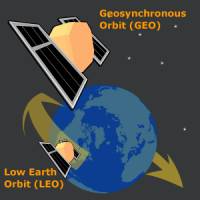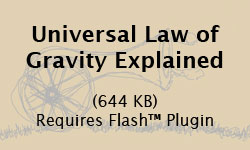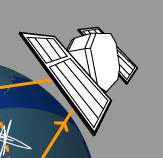William Liu is a proud Southern California local and was born in the wonderful City of Orange. He was a student at the University of Southern California studying to become an Aerospace Engineer. His future plans involve working in the field of Astronautics, overseas mission trips, and enjoying the later part of his life teaching high school sciences.
The launch of Sputnik in 1957 by the USSR marked the beginning of the satellite era. The next half-century saw new research and development that changed satellites into the useful tool of contemporary society. Modern satellites can help locate people all over the world, aid in scientific research, and perform many other valuable functions.
Introduction
As a huge plume of white gas rushes beneath an enormous pillar, the ground nearby begins to rumble. The sound of the blast intensifies and then suddenly, as mission control holds its breath, the rocket clears the tower and shoots swiftly away from the earth.
Such was the scene on March 10, 2003 when a Delta 4 Launch Vehicle perfectly placed another satellite into orbit. This particular payload was a Defense Satellite Communications System spacecraft for the Pentagon [1]. Thousands of these technological wonders now circle the Earth, relaying data so we can enjoy an evening of Monday night football, navigate from our cars, and conduct advanced research not possible in a terrestrial environment.
Early Satellites
In 1657, Cyrano de Bergerac’s Voyage to the Moon and, in 1865, Jules Verne’s From the Earth to the Moon sparked imaginary expeditions at the edges of human thought. These science fiction writers envisioned a future where machines took explorers out of this world. One of the first steps toward such a future was made in 1957 when the USSR launched Sputnik.
Sputnik
Sputnik was the world’s first artificial satellite. Launched on October 4, 1957, the basketball sized orbiter weighed 183 lbs and orbited the earth every ninety minutes at an altitude of 230 km above sea level. Its only scientific equipment was a radio transmitter that let people detect its presence in space. The scientific community was completely in awe as the tiny craft made its way around the world in less than two hours [2]. Soon afterward, the USSR launched another satellite, which it called Sputnik II. To challenge the superiority of the Russian Space Agency, the United States countered with its own satellite, Explorer I.
Explorer I
Launched on January 31st, 1958, Explorer I was the first project of NASA, the National Aeronautics and Space Administration. The spacecraft had a total length of only 80 inches with a weight of 30 lbs. Its sophisticated sensors allowed for the discovery of the magnetic radiation belts around the world. These belts, known today as the Van Allen belts, act as a shield to help protect the earth from harmful space radiation. Soon after this early success, NASA began a series of new projects aimed at exploring beyond the earth. The program was called Mariner.
Mariner II
Although both the United States and the USSR had demonstrated the ability to launch satellites into space, neither nation had ventured beyond the Earth’s orbit. This all changed in 1962 when NASA launched the Mariner II spacecraft. Using onboard rockets, the 200kg vehicle shot out of Earth’s gravitational field and became the first spacecraft to fly past another planet. It carried six scientific instruments and took nearly two months to reach Venus, whose geology it studied from orbit [3]. The mission was nearly cut short, however, when one of Mariner II’s solar panels was damaged and stopped supplying power to the onboard systems. Fortunately, the remaining panel was able to supply power for the entire spacecraft and allowed for the continuation of the mission.
The Evolution of the Satellite
Thirty years after Sputnik, Explorer I and Mariner II, the world’s demand for satellites had grown significantly. Satellite launch vehicles had grown more sophisticated, placing spacecraft in orbit faster and more cheaply than ever before. Transistors, the building blocks of digital computers, had decreased in size, allowing satellites to function far more efficiently. In recent years, highly refined design processes have cut the time it takes to plan, build, and launch a satellite from nearly a decade to about three years [4].
Today, there is a new interest in civilian involvement toward the peaceful aspects of space development. In total, there have been over 9,000 satellites launched into orbit, of which several hundred are still active [5]. Their purposes are diverse, and include scientific research, commercial communications, and military defense. To understand how these modern tools help people function today, we must understand the general physical layout of a satellite and the laws of nature it obeys.
The Universal Satellite
The modern day satellite has a relatively basic layout. There are usually only three parts to a satellite: the energy system, the payload, and the propulsion system.
The energy system is responsible for providing power to every part of the spacecraft. The most popular source of power for a satellite is the sun. The sun’s energy, in the form of light, is extremely abundant and can be harvested by large solar panels. These panels, which resemble wings on a plane, span outward from the spacecraft body and convert the sun’s energy into electrical power.
The payload, which uses the energy from the solar cells, varies from satellite to satellite depending on the purpose it serves. If the satellite is used for communications, then there is likely to be an onboard computer that helps process, route, and transmit information. Scientific satellites are usually packed with a variety of sensors that help predict weather on the earth or take pictures of galaxies light years away.
The Propulsion system consists of several miniature rockets placed at strategic places along the satellite. Once a satellite has been put in space, it needs these small rockets to orient itself so that it can direct its equipment in the desired direction. When used together, the small thrusters have full control over the spacecraft’s orientation. This system usually limits the lifetime of the satellite, since the satellite can only carry a limited amount of fuel.
With these three parts working together, a satellite can function on its own for several years without anyone controlling it. But before these systems can do their job, the satellite must first be placed in orbit.
Orbital Mechanics
Sir Isaac Newton spent much of his life devoted to orbital mechanics. While developing his Universal Law of Gravitation, he pondered what would happen if an object had a speed so high that it kept falling but never hit the ground. Newton predicted that the object would continue to circle the earth until something stopped it [6]). He confirmed his hypothesis by observing the motion of natural satellites revolving around large objects, such as the earth around the sun (see Fig. 1).
Three centuries later, scientists still take advantage of what Newton discovered. Satellite orbits are a direct consequence of the Universal Law of Gravitation. There are many different types of orbits, including LEO, or low earth orbits, and GEO, or geosynchronous orbits.
If you have ever gone camping you know that lying under the night’s sky can be a mesmerizing sight. Take a closer look and you will see that some stars move at a constant rate among the others. These small dots are none other than satellites circling the earth in a low earth orbit or LEO. They shimmer because light from the sun is reflected off their bodies and reflected back to Earth. Satellites in a LEO are usually only 500 km above the earth and have an orbital period of roughly 90 minutes [7]. Many of these satellites are used for communication equipment, weather observation systems, and national security. The first satellites mentioned earlier were placed in low earth orbits. Currently, the most impressive satellite placed in a low earth orbit–or any orbit, for that matter–is the International Space Station.
The Flying Laboratory
With a size that stretches over two football fields, the International Space Station, or ISS, is a joint project of sixteen nations worldwide. These countries have contributed their scientific and technological resources to further mankind’s knowledge in almost every discipline. With an estimated completion in the year 2004, the ISS is one of the largest endeavors ever undertaken by man. It travels comfortably in LEO, making it easily accessible to shuttles carrying crewmembers and supplies. The low orbit means that shuttles require less fuel to reach the ISS [8].
The geosynchronous earth orbit is a cleverly designed orbit (see Fig. 1). When satellites are placed this specific orbit, they rotate around the earth in exactly 24 hours. This allows them to stay in sync with the rotation of the world and remain in a fixed position over a specific point at over 40,000 km above the surface of the earth [7]. These orbits make possible many of the technological conveniences of today. The recent integration of Global Positioning System (GPS) satellites in GEO, for example, has made it possible to locate oneself anywhere in the world.
Never Get Lost Again
Whether one is lost in a maze of streets, backpacking in the Sierra Mountains, or sailing off the coast of Mexico, GPS satellites have revolutionized the way people navigate. Originally, GPS was designed only for military purposes only but now it has become a favorite tool for civilian use. Currently 90% of all GPS users are non-military. The Internet and cellular communications rely heavily on GPS for service and timing [9].
GPS satellites locate a target using triangulation (see Fig. 2). First, the satellites position is found relative to the earth. Next the satellite’s position is measured relative to the target. Finally, using mathematical equations, the position of the target relative to the earth is found. This method is used with up to three different GPS satellites to locate a user. With the known trajectories of the satellites, a receiver on the Earth’s surface can communicate with the network above and find its position with stunning accuracy [10].
What Goes Up Must Come Down
But what happens when satellites run out of gas? Much of what has been placed in space has a short predicted life span, usually only two to six years. Old equipment has the fate of continually circling the earth until it either collides with another satellite or plummets back to Earth. When the lifetime of an orbiter is up, usually Ground Control will order the satellite to aim itself toward the Earth and fire its thrusters. It is hoped that the satellite will disintegrate completely during its reentry into the atmosphere.
However, a study done by Aerospace Corporation’s Center for Orbital and Reentry Debris Studies, or CORDS, estimated that over 21,000 lbs of space debris has survived the reentry process and struck land. Areas such as the Canadian and Russian tundra have been bombarded with enormous pieces of charred equipment while the owners simply shrug their shoulders and partially claim responsibility. In a refreshing light Nicholas Johnson, chief scientist in NASA’s orbital debris program office, states that “there is less debris coming down annually than there was 10 years ago” [5]. Still the fact that your car can be completely demolished by a piece of space junk is possible. In 1979 the United States Skylab space station fell out of its orbit and 77 tons of science sent brilliant streaks across Australians skies. Humorously enough, Australia responded by citing America with a littering ticket [5]. Thankfully, there have not yet been any documented injuries due to falling space debris.
The Benefits of Satellites
What makes the satellite an important tool to the human race is its potential. Since its first appearance in 1957, the satellite has evolved into a universal medium, able to advance technology in almost every scientific discipline. Although it is not complete at this time, the ISS is currently being used to investigate many different topics like genetic engineering of plants and the causes of osteoporosis [8]. Satellites have also saved lives in a more direct way by providing critical information to military personnel. They have the ability to take pictures, connect troops, and locate enemy targets all over the world. Cellular phones now have the ability to call family and friends whether you are in the busy streets of New York or the Rocky Mountains. Handheld GPS receivers ensure backpackers always know where they are. The wide array of satellite applications begs the question, “what is next?” Better telescopes, faster computers, and more precise sensors? Only the imaginations of contemporary engineers will tell.
References
-
- [1] C. Covault. “Delta IV Priced For Satcom Market Battle.” Aviation Week (Dec. 2002) , p.54-55.
- [2] “Sputnik and the Dawn of the Space Age.” Internet: http://www.hq.nasa.gov/office/pao/History/sputnik/, [March 2003].
- [3] “Mariner 2.” Internet: http://www.nauts.com/vehicles/60s/mariner2.html;20030503190730623.
- [4] C. D. Jilla. “Satellite Design: Past, Present, and Future.” Internet: http://www.ee.surrey.ac.uk/Research/CSER/UOSAT/IJSSE/issue1/cjilla/cjilla.html, Feb. 12, 1997.
- [5] L. David. “What Goes Up Must Come Down.” Internet: http://www.space.com/scienceastronomy/planetearth/space_debris_000905.html, [Mar. 9, 2003].
- [6] Sir Isaac Newton. “The Universal Law of Gravitation.” Internet: http://csep10.phys.utk.edu/astr161/lect/history/newtongrav.html, [March 2003].
- [7] F. J Hale. (1994). Introduction to Space Flight. [March 2003].
- [8] Internet: http://www.shuttlepresskit.com/ISS_OVR/.
- [9] R. Wall and C. Covault. “Eroding GPS Worried Pentagon.” Aviation Week., pp.56-99, Nov. 2002.
- [10] T. F. Tascoione. Introduction to the Space Environment.
- K. Nice. and Tom Harris. How Satellite TV works. How Stuff Works. March 2003. <http://electronics.howstuffworks.com/satellite-tv1.htm>.







